AQA Psychology - Biopsychology
0.0(0)
Card Sorting
1/96
Earn XP
Description and Tags
Paper 2 - only named researchers are Broca + Wernicke
Study Analytics
Name | Mastery | Learn | Test | Matching | Spaced |
|---|
No study sessions yet.
97 Terms
1
New cards
What is the central nervous system made of?
brain and spinal cord
2
New cards
What is the peripheral nervous system made of?
Autonomic nervous system and somatic nervous system
3
New cards
What is the autonomic nervous system made of?
Sympathetic division and parasympathetic division
4
New cards
What are sensory neurones?
Neurones that carry messages from the peripheral nervous system to the central nervous system
5
New cards
What are motor neurones?
Neurones that connect the CNS to muscles and glands
6
New cards
What are **relay** neurones?
Neurones that connect sensory neurones and motor neurones (short dendrites and axons)
7
New cards
What is the role of the CNS?
It controls the brain and regulating the body's phsyiological processes.
8
New cards
What is the role of the autonomic nervous system?
Regulates **INVOLUNTARY** actions needed to function (digestion, heartbeat etc)
9
New cards
What is an **excitatory** neurotransmitter?
Increases **positive charge** in post synaptic neurone (eg @@adrenaline@@) and the chance of another action potential being fired
10
New cards
What is an inhibitory neurotransmitter?
Increases **negative charge** in post synaptic neurone (eg @@Serotonin@@) and decreases the chance of another action potential being fired.
11
New cards
Explain **synaptic transmission**
1. Action potential reaches axon terminal
2. Calcium channels **open**
3. **Ca2+** causes **vesicles** to release neurotransmitter
4. Neurotransmitter crosses synapse
5. Neurotransmitter **binds** to neuroreceptors
6. Triggers signal in Post synaptic neurone
12
New cards
What is the endocrine sysytem?
A collection of glands that produce hormones to regulate human functions - works using a negative feedback loop
13
New cards
Give an example of the endocrine system in action
* Hypothalamus sends signal to pituary gland
* Pituary Gland secretes a stimulating hormone into bloodstream
* Adrenal Gland produces target hormone
* Hypothalamus shuts down secreteing hormone and pituary shuts down stimulating hormone to balanc target hormone levels
* Pituary Gland secretes a stimulating hormone into bloodstream
* Adrenal Gland produces target hormone
* Hypothalamus shuts down secreteing hormone and pituary shuts down stimulating hormone to balanc target hormone levels
14
New cards
Give an example of a major gland in the endocrine system
* Pituary Gland
* Adrenal Gland
* Ovaries
* Testes
* Adrenal Gland
* Ovaries
* Testes
15
New cards
What is a hormone?
A chemical messenger circulating the bloodstream
16
New cards
What does the pituitary gland do?
Anterior secretes cortisol and ACTH \n Posterior secretes Oxytocin
17
New cards
What is a target Cell?
Specific cells which have receptor sites which bind to specific hormones
18
New cards
What is the sympathetic response?
* Increased heart rate
* Dilate pupils
* Inhibited saliva production
* Dilate pupils
* Inhibited saliva production
19
New cards
What is the parsympathetic response?
* Decreased Heart rate
* Decreased blood pressure
* Increased Digestion
* Decreased blood pressure
* Increased Digestion
20
New cards
What is the SAM pathway?
1. **Hypothalamus** commands the…
2. **AUTONOMIC Nervous system** to activate the…
3. **SYMPATHETIC** branch stimulating the…
4. **ADRENAL MEDULLA** to release…
5. **ADRENALINE** and **NORADRENALINE** activating the…
6. **FIGHT/FLIGHT** response
21
New cards
\
What does **Taylor et al. (2000)** suggest about the gender differences in fight or flight?
What does **Taylor et al. (2000)** suggest about the gender differences in fight or flight?
Females have a 'tend and befriend' response more often than not, linked to higher oxytocin levels i.e holding babies in a situation - **BETA BIAS**
22
New cards
Give one **limitation** of FIGHT or FLIGHT
**Maladaptive to modern day stressors** - we're unable to do anything w/ excess cortisol + adrenaline causing **sickness** i.e hypertension, colds and stress
23
New cards
What is **localisation**?
The theory that **specific** areas of the brain have **specific** **biological** and **psychological** functions
24
New cards
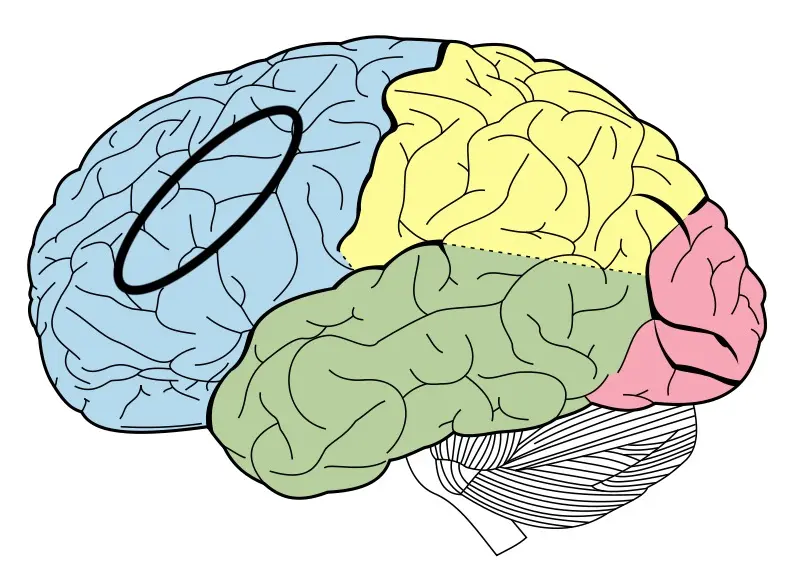
Which area of the brain is this?
Frontal lobe/motor cortex
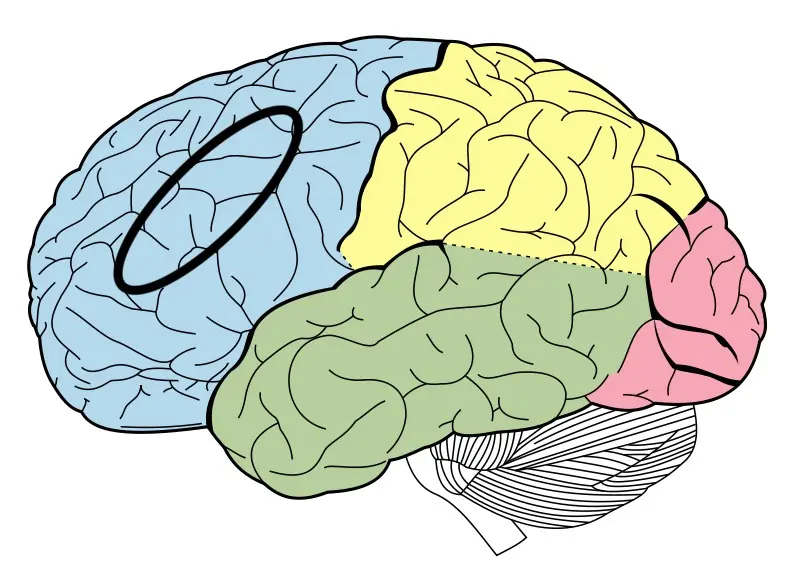
25
New cards
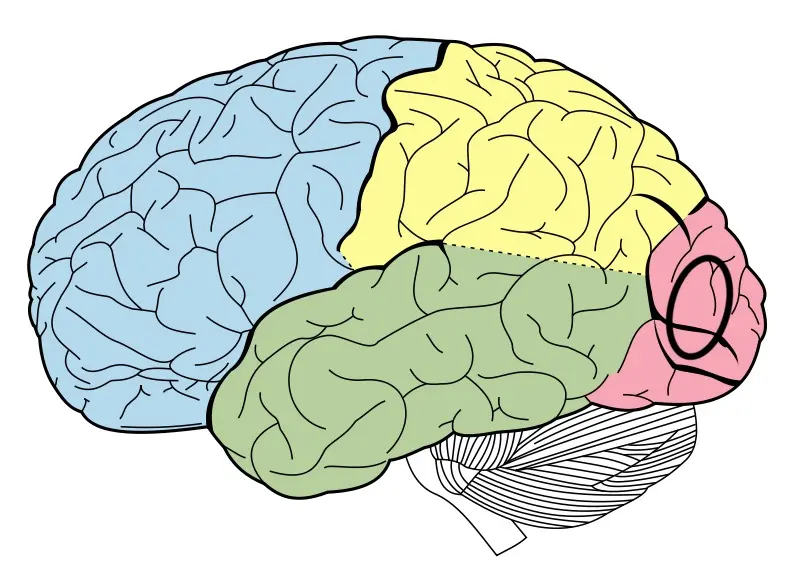
Which area of the brain is this?
Occipital lobe/ visual cortex
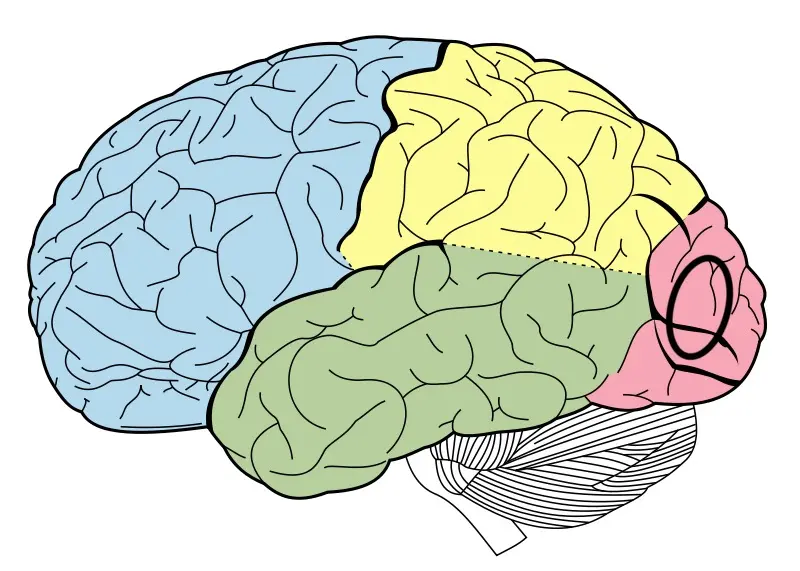
26
New cards
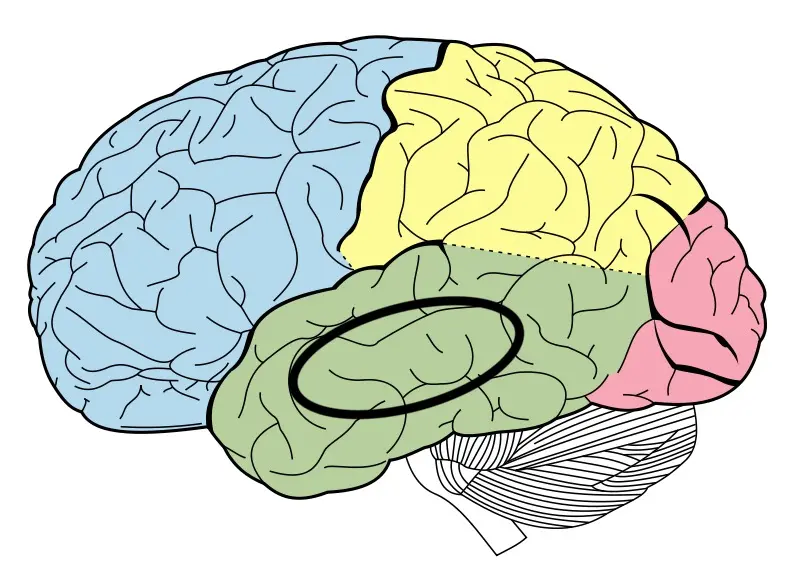
Which area of the brain is this?
Temporal lobe/ auditory centres
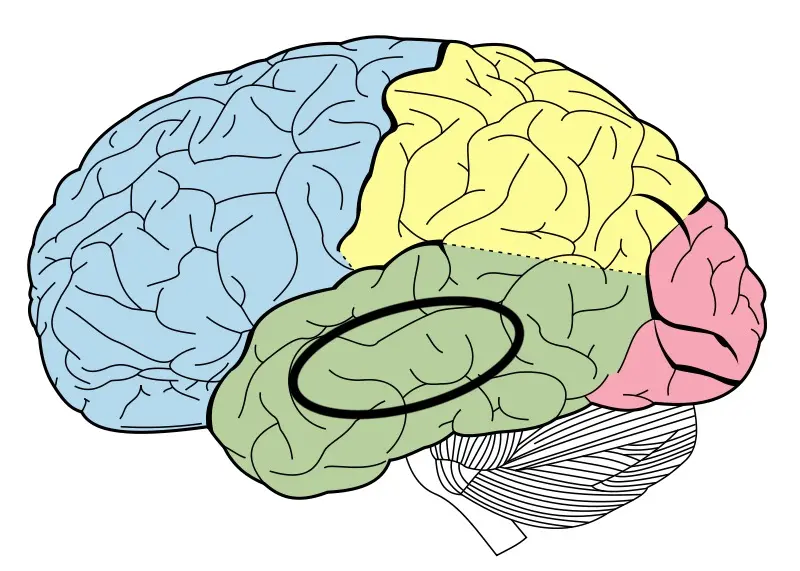
27
New cards
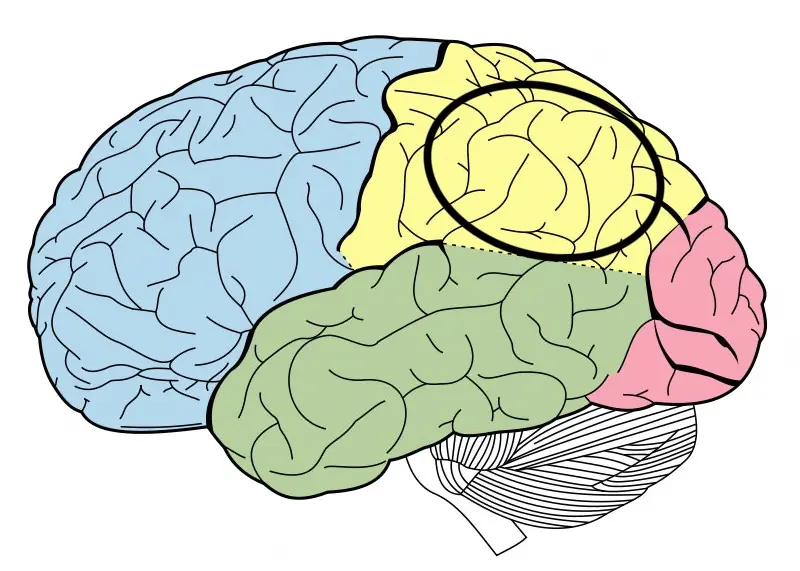
Which area of the brain is this?
Parietal lobe / somatosensory cortex
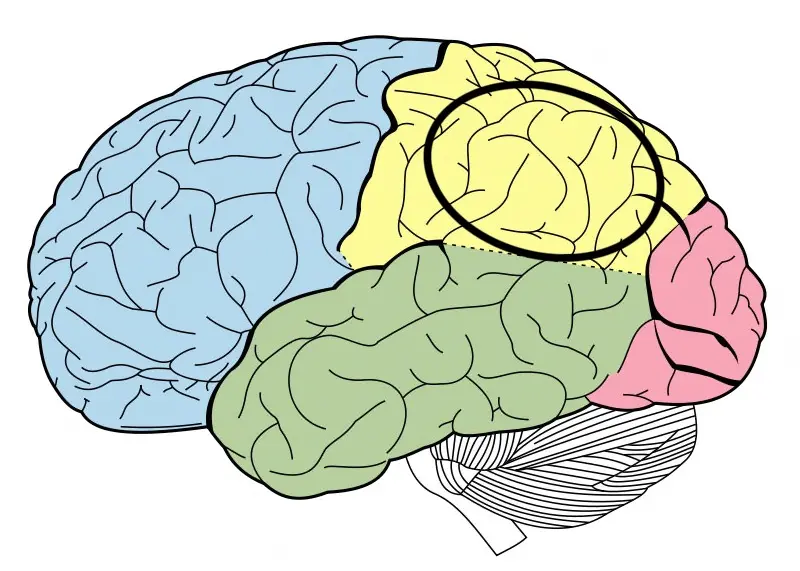
28
New cards
Where is **Broca’s area** found?
**Left** side of the **frontal** lobe
29
New cards
Where is **Wernicke**’s area found?
**Left** side of the **temporal** lobe
30
New cards
What is the role of the **somatosensory cortex**?
The somatosensory cortex is responsible for receiving and processing sensory information
31
New cards
What is the role of the **motor cortex**?
It is responsible for the generation of voluntary motor movements
32
New cards
What is the role of the **auditory centre**?
Located in the temporal lobe, the auditory centres are concerned with hearing
33
New cards
What is the role of the **visual centre**?
Located in the occipital lobe, the visual cortex is responsible for visual processing.
34
New cards
Why is **equipotentiality** a limitation of localisation?
Equipotentiality is a limitation of localisation because it suggests that **all parts of the brain region** may be able to perform any given function. This suggests localision is reductionistic + too simple
35
New cards
Why do **apahasia studies** show support for **localisation** of language centres?
Aphasia studies have consistently found that **damage** to specific areas of the brain, such as **Broca's and Wernicke's** **areas**, can result in specific language deficits.
36
New cards
Give an **issue or debate** regarding the localisation of brain function
### %%Biologically reductionism%%
Localisation is **biologically reductionist** in nature and tries to reduce very complex human behaviours and cognitive processes to one specific brain region
Localisation is **biologically reductionist** in nature and tries to reduce very complex human behaviours and cognitive processes to one specific brain region
37
New cards
What is **hemispheric lateralisation**?
The dominance of one hemisphere of the brain for a particular physical and psychological functions e.g. the left is dominant for language, and the right excels at visual motor tasks
38
New cards
What are the **functions** of **left hemisphere**?
Control of **right** side of body, right visual field, speech, understanding written + spoken language, logical thinking, analytical tasks
39
New cards
What are the **functions** of **right hemisphere**?
Control of **left** side of body, left visual field, spatial awareness, creativity, recognising faces, musical ability, emotional content of language, drawing
40
New cards
What is the **corpus callosum** and **what is its function**?
The corpus callosum **connects** the two hemispheres of the brain + allows the 2 sides together
41
New cards
What is an **issue/debate** with lateralisation?
### %%Nomothetic/Idiographic%%
↳ The idea of lateralisation iself is nomothetic however the research that support this uses case studies as support which is **idiographic**
↳ The idea of lateralisation iself is nomothetic however the research that support this uses case studies as support which is **idiographic**
42
New cards
What were the **findings** of **Sperry and Gazzaniga's (1967) study**?
* Left and right hemispheres of the brain have different functions
* Information presented to one hemisphere cannot be accessed by the other hemisphere
* Each hemisphere can operate independently
* Information presented to one hemisphere cannot be accessed by the other hemisphere
* Each hemisphere can operate independently
43
New cards
Describe the experimental design of **Sperry and Gazzaniga's (1967)** study
* Quasi Experiment
* Small Sample (11 pps)
* Case Study
* Small Sample (11 pps)
* Case Study
44
New cards
What is an **advantage** of **brain lateralisation**?
It is **adaptive** as we can use one hemisphere for a particular task and free up the other for a different task
45
New cards
What is a **disadvantage** of **brain lateralisation**?
==**Szaflarski et. al (2006)**== found that after **25** lateralisation **decreased** with each decade of life - this is known as **cognitive decline**
46
New cards
What is **plasticity**?
The brains tendency to change and adapt (**functionally** **and structurally**) as a result of **experiences**, **new learning** or **training**. ==Functional plasticity decreases with age==
47
New cards
What is **functional recovery**?
The brains ability to **redistribute** or **transfer functions** usually performed by damaged areas, **to not damaged area(s)**
48
New cards
Give research support for **Functional Recovery**
**Taijiri et al. (2013)**
They found that stem cells provided to rats after brain trauma showed a **clear development of neuron-like cells in the area of injury**. This demonstrates the ability of the brain to create **new connections** using neurons manufactured by stem cells
They found that stem cells provided to rats after brain trauma showed a **clear development of neuron-like cells in the area of injury**. This demonstrates the ability of the brain to create **new connections** using neurons manufactured by stem cells
49
New cards
What is **neural reorganisation?**
The transfer of functions to undamaged areas
50
New cards
What is **axon regeneration?**
When new neurons may grow and/or new connections may form to compensate for the damaged areas where neurons are lost
51
New cards
Give an example of research into **plasticity**
### ^^McGuire et al (2000)^^
↳ Looked at the **brains** of **London cab drivers** who had taken ‘The Knowledge’ exam
* They found significantly **more volume of grey matter** in **posterior hippocampus** compared to a control
↳ Looked at the **brains** of **London cab drivers** who had taken ‘The Knowledge’ exam
* They found significantly **more volume of grey matter** in **posterior hippocampus** compared to a control
52
New cards
Give research support for plasticity from animal studies
* **Kempermann** (1999) conducted a study on mice
* He found that environmental enrichment increased the production of **new neurons** in the **hippocampus**, a brain region important for learning and memory.
* This study provided evidence for the concept of neuroplasticity, which suggests that the brain is capable of changing and adapting in response to environmental stimuli
* He found that environmental enrichment increased the production of **new neurons** in the **hippocampus**, a brain region important for learning and memory.
* This study provided evidence for the concept of neuroplasticity, which suggests that the brain is capable of changing and adapting in response to environmental stimuli
53
New cards
Give an **issue/debate** with neuroplasticity
### ^^Nature/Nurture^^
↳ Neuroplasticity takes an interactionist approach where it considers both the environment and biological predisposition in its develoment
↳ Neuroplasticity takes an interactionist approach where it considers both the environment and biological predisposition in its develoment
54
New cards
What is **spatial resolution**?
The smallest measurement available - greater spatial resolution to allows discrimination between d**ifferent brain regions** with **greater accuracy**
55
New cards
What is temporal resolution?
How quickly it can detect changes in brain activity
56
New cards
Describe the **procedure** of an **fMRI**
* fMRI measures **blood flow changes** to **detect brain activity.**
* Patients lie in a tube-like machine while **magnetic fields** and **radio waves** create brain images.
* They **perform tasks** or rest during the scan.
* Images show **active brain areas**.
* fMRI is used to diagnose neurological disorders
* Patients lie in a tube-like machine while **magnetic fields** and **radio waves** create brain images.
* They **perform tasks** or rest during the scan.
* Images show **active brain areas**.
* fMRI is used to diagnose neurological disorders
57
New cards
Give a **strength** of **fMRIs**
* Non-invasive
* More data means more understanding of **localisation of function**
* Good **spatial resolution** (1-2mm)
* Determine areas of function with **greater accuracy**
* More data means more understanding of **localisation of function**
* Good **spatial resolution** (1-2mm)
* Determine areas of function with **greater accuracy**
58
New cards
Give a **weakness** of **fMRIs**
* Poor temporal resolution (1-4 secs) = unable to predict with high accuracy the onset of brain activity; Don't provide direct measure of neural activity - changes in blood flow indicate activity, but can't associate it with a specific function
59
New cards
What is an **EEG**?
### Electroencephalagram
* EEG is a non-invasive test that measures electrical activity in the brain.
* Electrodes are placed on the scalp to detect the electrical signals produced by the brain.
* The test is used to diagnose and monitor conditions such as epilepsy, sleep disorders, and brain injuries.
* EEG can also be used to study brain function and activity in research settings.
* EEG is a non-invasive test that measures electrical activity in the brain.
* Electrodes are placed on the scalp to detect the electrical signals produced by the brain.
* The test is used to diagnose and monitor conditions such as epilepsy, sleep disorders, and brain injuries.
* EEG can also be used to study brain function and activity in research settings.
60
New cards
Give a **strength** of EEGs
* Used in clinical diagnosis, e.g. epilepsy
* Has **real world application**
* **High temporal resolution** (detect changes at 1 millisecond)
* Accurately measure particular task with associated brain activity
* Cheap
* Has **real world application**
* **High temporal resolution** (detect changes at 1 millisecond)
* Accurately measure particular task with associated brain activity
* Cheap
61
New cards
Give a **weakness** of **EEGs**
* Only detect superficial brain activity can't look at deeper parts, e.g. hippocampus
* **Poor spatial resolution** - can't pinpoint where electrical signal originated from
* **Unable to distinguish** between activities from different but adjacent parts
* **Poor spatial resolution** - can't pinpoint where electrical signal originated from
* **Unable to distinguish** between activities from different but adjacent parts
62
New cards
What is an **ERP**?
### Event Related Potential
* It measures the **electrical activity of the brain in response to a stimulus**
* Electrodes are placed on the **scalp** to record the brain activity
* The resulting waveform is analyzed to determine **cognitive processes** such as attention, memory, and language
* ERP provides insight into the **neural mechanisms** underlying cognitive processes
* It can identify **abnormalities** in brain function associated with **various disorders.**
* It measures the **electrical activity of the brain in response to a stimulus**
* Electrodes are placed on the **scalp** to record the brain activity
* The resulting waveform is analyzed to determine **cognitive processes** such as attention, memory, and language
* ERP provides insight into the **neural mechanisms** underlying cognitive processes
* It can identify **abnormalities** in brain function associated with **various disorders.**
63
New cards
Give a **strength** of **ERPs**
* Measure processing of stimuli in absence of behavioural response, e.g. reaction to seeing an unfamiliar object
* They can monitor processing of stimulus without requiring person to respond
* They can monitor processing of stimulus without requiring person to respond
64
New cards
Give a **weakness** of **ERPs**
* Lack validity as can't completely eliminate background noise
↳ could be influenced by extraneous variables, so cautious generalising
↳ could be influenced by extraneous variables, so cautious generalising
65
New cards
What is a **post-mortem** exam?
* Analysing the brains of someone after they've died
↳ most likely if they have a rare disorder or experienced u
usual deficits in mental processes or behaviour
* Areas of damage examined to try and **correlate** to **structural abnormalities**
↳ most likely if they have a rare disorder or experienced u
usual deficits in mental processes or behaviour
* Areas of damage examined to try and **correlate** to **structural abnormalities**
66
New cards
Give a **strength** of **post-mortems**
* More **detailed** exam of anatomical areas of brain, e.g. hippocampus and hypothalamus
* Contributed towards understanding of key processes in the brain, e.g. making **link between language and the Brocas and Wernickes areas**
* Contributed towards understanding of key processes in the brain, e.g. making **link between language and the Brocas and Wernickes areas**
67
New cards
Give a weakness of **post-mortems**
* Can't establish cause and effect as
* Only shows physiology, not actual brain activity
* Confounding influences, e.g. disease, time between death and examination, medications, age
* Retrospective meaning they can't follow up on interesting findings
* Only shows physiology, not actual brain activity
* Confounding influences, e.g. disease, time between death and examination, medications, age
* Retrospective meaning they can't follow up on interesting findings
68
New cards
What are **biological rhythms**?
Cyclic changes in body activity
69
New cards
What are **endogenous pacemakers**?
**Internal body clocks**
↳ They control the SCN and pineal gland for the circadian sleep-wake cycle
↳ They control the SCN and pineal gland for the circadian sleep-wake cycle
70
New cards
Give research evidence to support **endogenous pacemakers**
### ^^DeCoursey et al. (2000)^^
* He destroyed **SCN** in **30** chipmunks which destroyed their sleep wake cycle
* They were then transferred back to their natural habitat
* A **significant** number of them had been **killed by predators** as they were awake when they should have been aslep (and vice versa) leaving them **vulnerable to attack**
* He destroyed **SCN** in **30** chipmunks which destroyed their sleep wake cycle
* They were then transferred back to their natural habitat
* A **significant** number of them had been **killed by predators** as they were awake when they should have been aslep (and vice versa) leaving them **vulnerable to attack**
71
New cards
What are **exogenous zeitgebers**?
**External cues** that affect our **biological rhythms**, e.g. light on sleep-wake cycle
72
New cards
What are **circadian rhythms**?
Type of biological rhythm where a pattern of behaviour occurs, or reoccurs, approx. every 24 hours. Its set and reset by environment (light and temp), e.g. **sleep wake cycle**
73
New cards
Give an example of **research** into **circadian rhythms**
### ^^Siffre (1962)^^
↳ Spent time **underground** (no natural light, sounds) for 2 and 6 months (he did it twice)
Found that his biological rhythm settled to **25 hours**, with him falling asleep on a regular basis
↳ Spent time **underground** (no natural light, sounds) for 2 and 6 months (he did it twice)
Found that his biological rhythm settled to **25 hours**, with him falling asleep on a regular basis
74
New cards
Give a strength of **circadian rhythms**
* Practical application to shift work
* **Practical** + **economic** implications as can **maintain** **worker productivity** + **prevent workplace accidents**
* Useful for timing drug dosing
* Supporting evidence (Siffre) = increased validity
* **Practical** + **economic** implications as can **maintain** **worker productivity** + **prevent workplace accidents**
* Useful for timing drug dosing
* Supporting evidence (Siffre) = increased validity
75
New cards
Give a **limitation** of **circadian rhythms**
* Research lacks external validity as small sample
* Siffre’s research is **idiographic**
* Doesn't look at gender or age influence
* Poor control in studies, e.g. only assuming natural not artificial light having an influence = lacks validity
* Siffre’s research is **idiographic**
* Doesn't look at gender or age influence
* Poor control in studies, e.g. only assuming natural not artificial light having an influence = lacks validity
76
New cards
What is the **SCN**?
Suprachiasmatic nucleus (SCN) is a cluster of nerves, thant link with other rgions that control sleep and arousal, to reulate circadian rhythms
↳ Sends signals to the **pineal gland** increasing melatonin production at night and decreasing it in the day
^^**Negative feedback loop**^^
↳ Sends signals to the **pineal gland** increasing melatonin production at night and decreasing it in the day
^^**Negative feedback loop**^^
77
New cards
Give an **issue/debate** regarding **Circadian Rhythms**
### ^^**Reductionism** ^^
↳ Sleep/Wake cycle is **reductionist** as it reduces the functioning of **sleep cycles** to the **biological** control - SCN, and ignores **psychological** **factors** such as **stress**
↳ Sleep/Wake cycle is **reductionist** as it reduces the functioning of **sleep cycles** to the **biological** control - SCN, and ignores **psychological** **factors** such as **stress**
78
New cards
Give **research support** for **Exogenous Zeitgeibers**
### Campbell and Murphy (1998)
↳ They monitored the body temperatures of 15 volunteers who slept in a laboratory
* They introduced light to the during the night at a series of intervals by **shining a beam of light onto the back of their knees**
* They were woken at different times and a light pad was shone on the back of their knees
* @@**The participant’s circadian rhythms were disrupted by up to three hours**@@
* This shows that it is not **necessary for light** just to enter the **eyes** to have a **physiological effect** on biological rhythms and shows the EZ do have an effect on our biological rhythms
↳ They monitored the body temperatures of 15 volunteers who slept in a laboratory
* They introduced light to the during the night at a series of intervals by **shining a beam of light onto the back of their knees**
* They were woken at different times and a light pad was shone on the back of their knees
* @@**The participant’s circadian rhythms were disrupted by up to three hours**@@
* This shows that it is not **necessary for light** just to enter the **eyes** to have a **physiological effect** on biological rhythms and shows the EZ do have an effect on our biological rhythms
79
New cards
Give **research weaknesses** of EZ’s and EP’s
* Issue of generalising animal studies to humans
* Lack of reliability found for exogenous zeitgebers
* Lack of reliability found for exogenous zeitgebers
80
New cards
What are **Infradian rhythms**?
**Infrequent** - biological rhythm with duration of **over 24 hours**, e.g. the menstrual cycle
81
New cards
Give an example of an **Infradian Rhythm**
### Menstrual cycle
↳ approx. 28 days
* ovulation occurs in middle when oestrogen is highest
* next progesterone increases to prep for pregnancy
* If pregnancy doesn’t occur egg is absorbed and leaves with womb lining
↳ approx. 28 days
* ovulation occurs in middle when oestrogen is highest
* next progesterone increases to prep for pregnancy
* If pregnancy doesn’t occur egg is absorbed and leaves with womb lining
82
New cards
Give **research support** for **Infradian Rhythms**
### ^^Stern and McClintock^^
↳ 10 year longditudinal study
* 29 women with irregular periods, **collected pheromones from 9** from armpit using cotton wool
* Other **20** had it rubbed on their upper lip; pads were collected on different days of the cycle
* **68% experienced changes to their menstrual cycle which bought it closer to their ‘donors’**
↳ 10 year longditudinal study
* 29 women with irregular periods, **collected pheromones from 9** from armpit using cotton wool
* Other **20** had it rubbed on their upper lip; pads were collected on different days of the cycle
* **68% experienced changes to their menstrual cycle which bought it closer to their ‘donors’**
83
New cards
What is the **endogenous pacemaker** for the menstrual cycle?
Hormones
84
New cards
What is the **Exogenous Zeitgeber**?
* **Pheremones** of other women
* Stress
* Diet
* Stress
* Diet
85
New cards
Explain the **evolutionary basis of the menstrual cycle**
* Beneficial for women to fall pregnant around the same time
* Collective caregving to the social group
* Collective caregving to the social group
86
New cards
What is an **Ultradian Rhythm**?
Biological rhythm that lasts **less than 24 hours**, e.g. stages of sleep
87
New cards
Sleep cycle
Has 5 stages it goes through (1-4, REM) that altogether spans 90-120 mins
88
New cards
Stage 1 of the sleep cycle
Light sleep, easily awoken, have alpha (restful) and theta (between sleep and wake) brainwaves
89
New cards
Stage 2 of the sleep cycle
Between light and deep sleep, breathing + heart rate slows; slower brainwaves, mainly theta
90
New cards
Stage 3 of the sleep cycle
Deep sleep begins, muscle activity decreases; slow delta waves, but also some fast ones
91
New cards
Stage 4 of the sleep cycle
Deep sleep (very hard to be awoken); almost all delta waves
92
New cards
REM stage of the sleep cycle
Dreaming occurs, eyelids can be seen flickering; brainwaves reach similar levels to when awake
93
New cards
Give a **strength** of Ultradian Rhythms
Reseearch Support
\
\
94
New cards
Give a **weakness** of Ultradian Rhythms
* Often carried out in sleep labs
↳ Low Ecological Validity
↳ High control
↳ Low Ecological Validity
↳ High control
95
New cards
Hormones released by adrenal glands
Adrenaline and Cortisol
96
New cards
What was the procedure of **Sperry and Gazzaniga's (1967)** study?
* Sperry and Gazzaniga's (1967) study involved **split-brain patients who had undergone surgery to sever the corpus callosum**
* The researchers presented visual stimuli to either the left or right visual field of the patients.
* When stimuli were presented to the left visual field, which is processed by the right hemisphere, patients say ‘I saw nothing’ but could draw the object with their left hand.
* When stimuli were presented to the right visual field, which is processed by the left hemisphere, patients were able to say what they had seen but couldn’t draw the object with their right hand.
* The researchers presented visual stimuli to either the left or right visual field of the patients.
* When stimuli were presented to the left visual field, which is processed by the right hemisphere, patients say ‘I saw nothing’ but could draw the object with their left hand.
* When stimuli were presented to the right visual field, which is processed by the left hemisphere, patients were able to say what they had seen but couldn’t draw the object with their right hand.
97
New cards
What was the only **anomaly** in Sperry and Gazzaniga's (1967) study?
**Facial Recognition:** When a face was shown to the right visual field, they could recognise it was a face but not the age, race, gender becuase **facial recognition is in the right hemisphere**